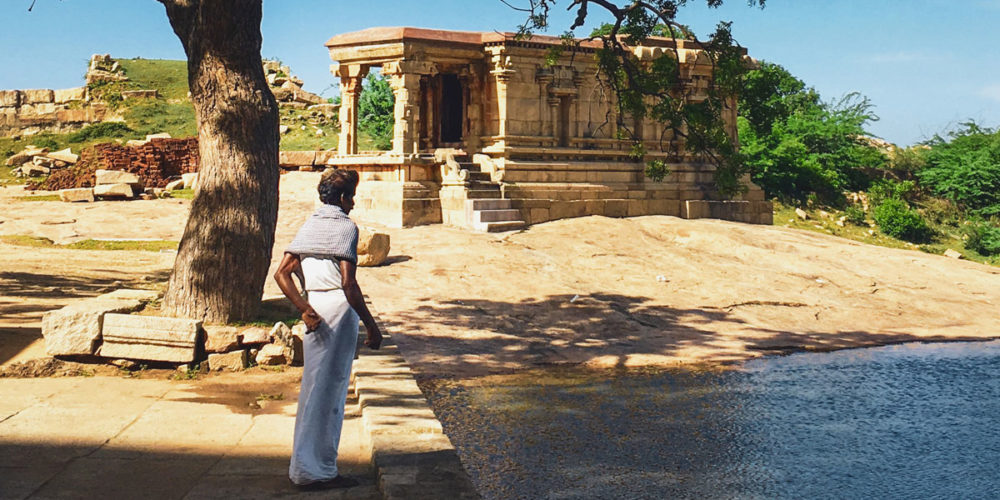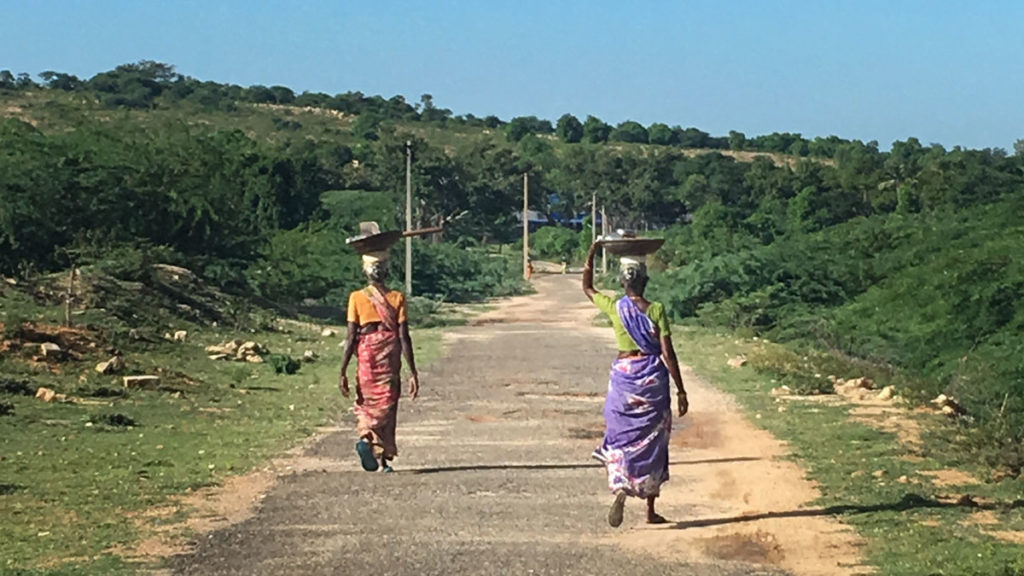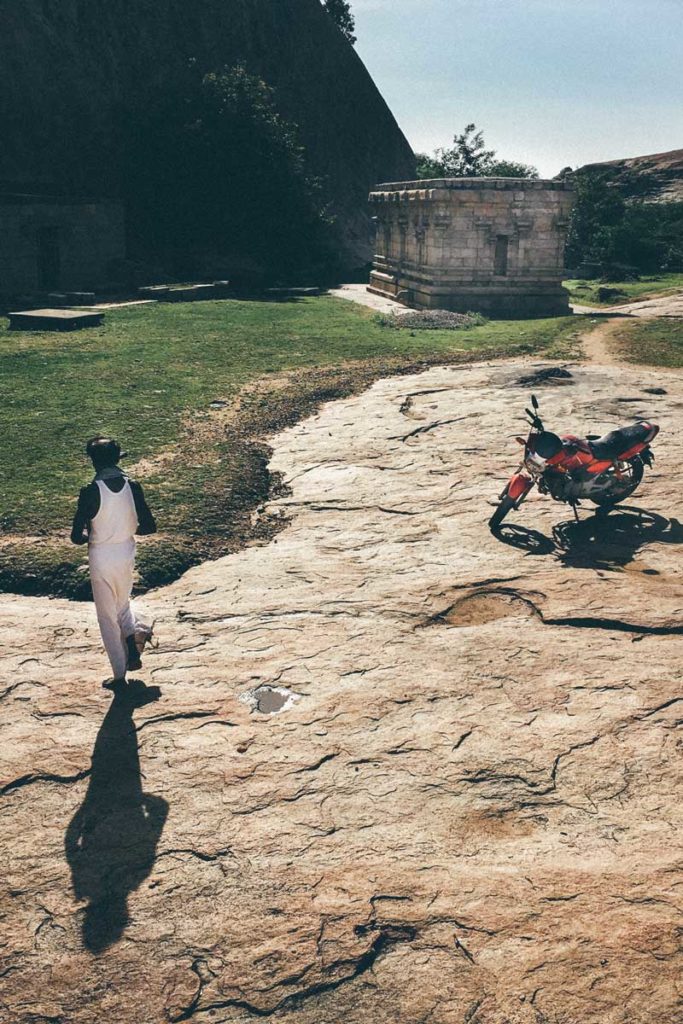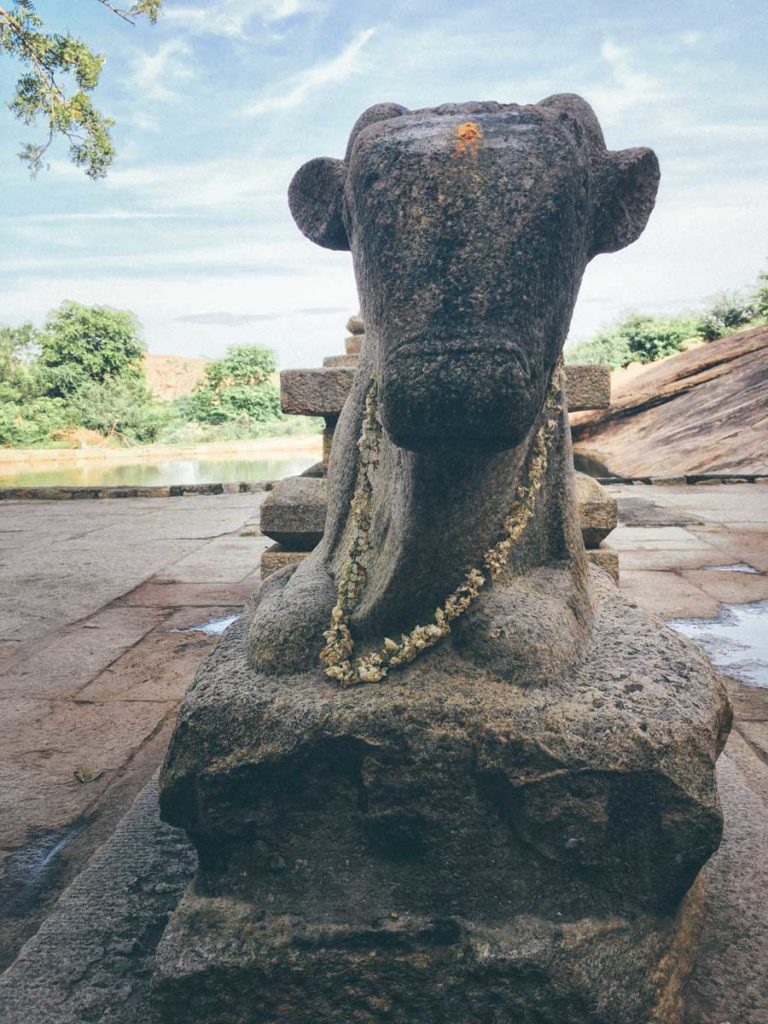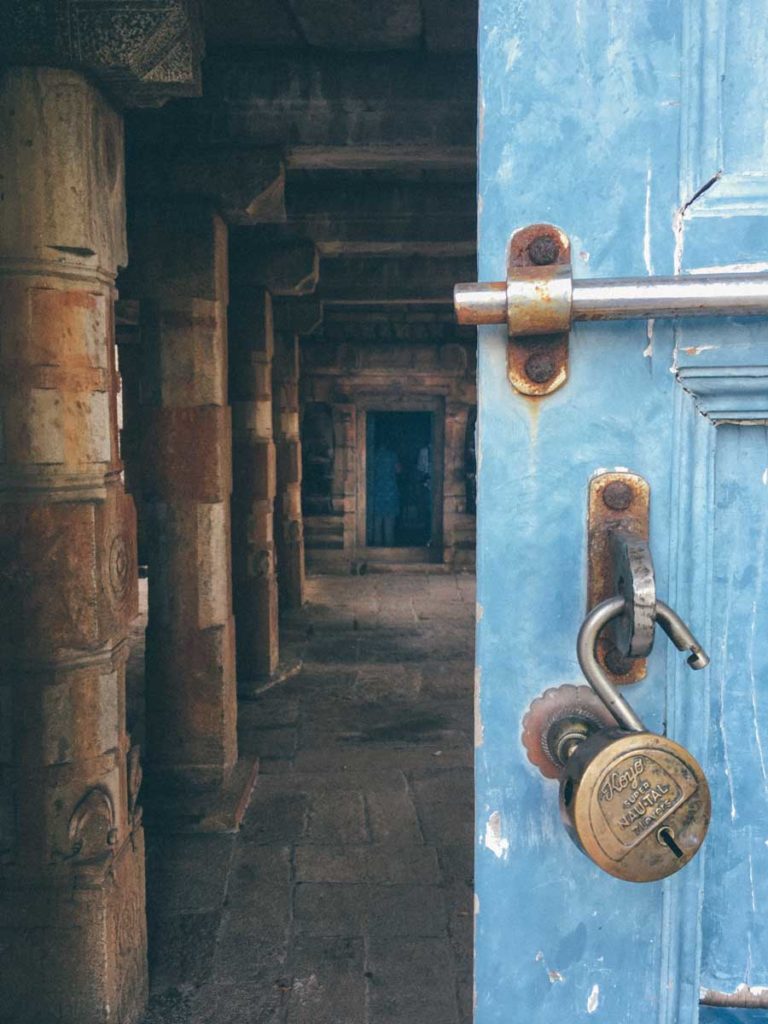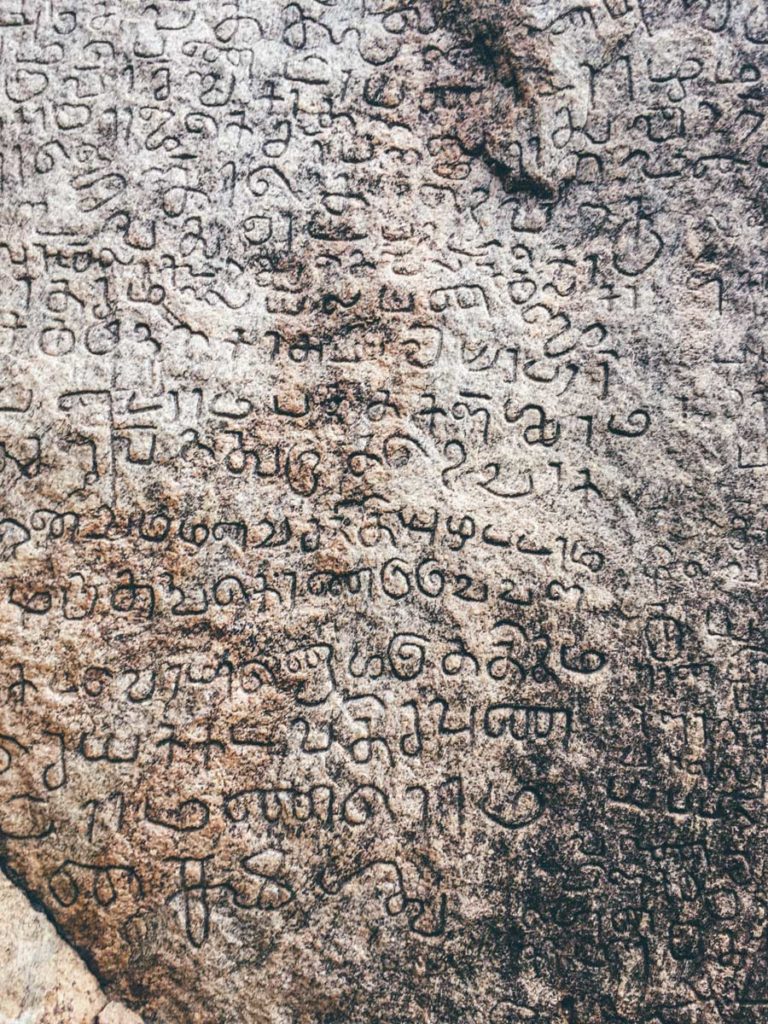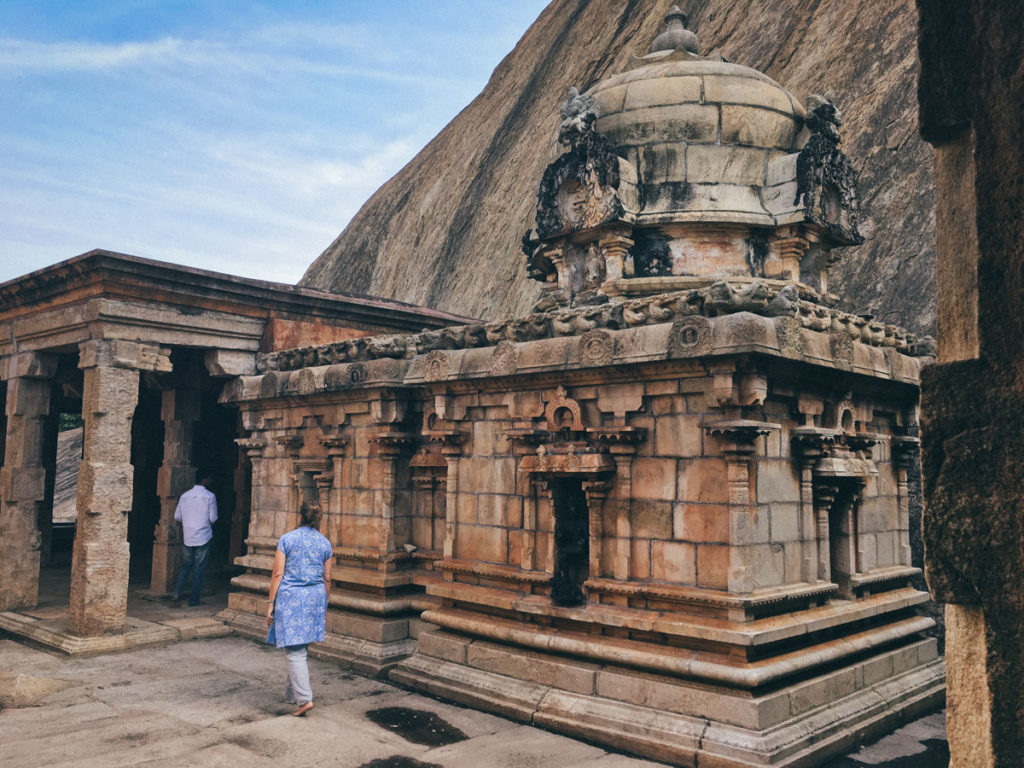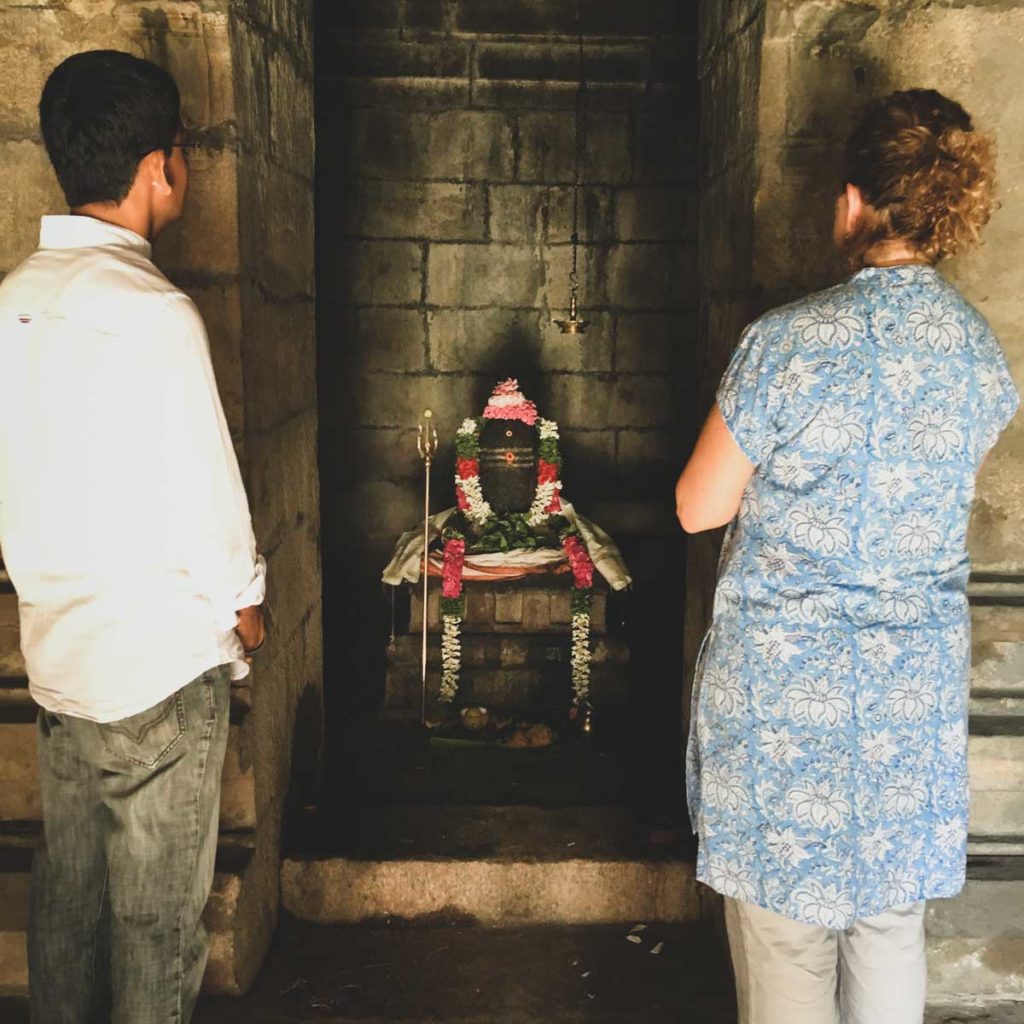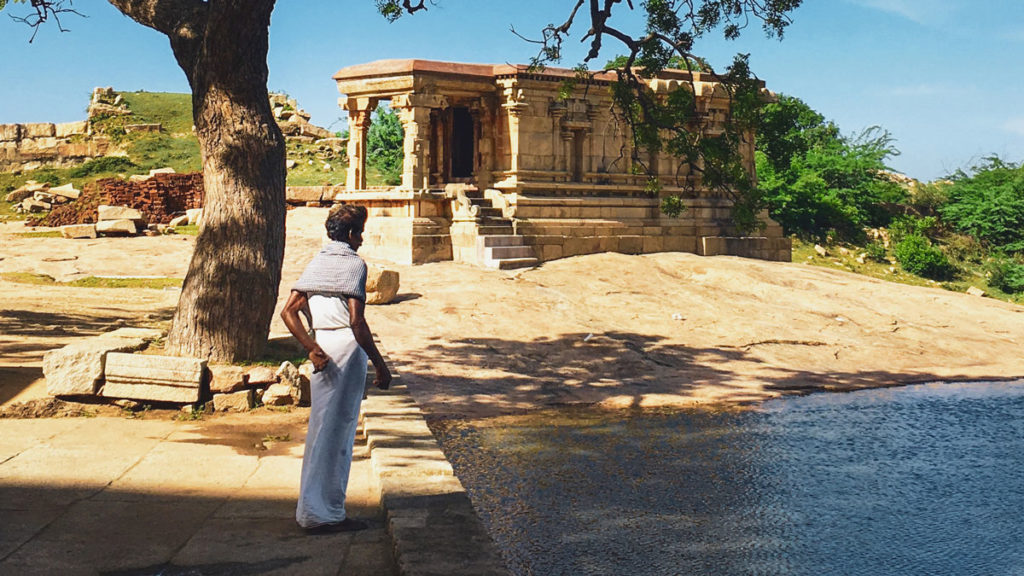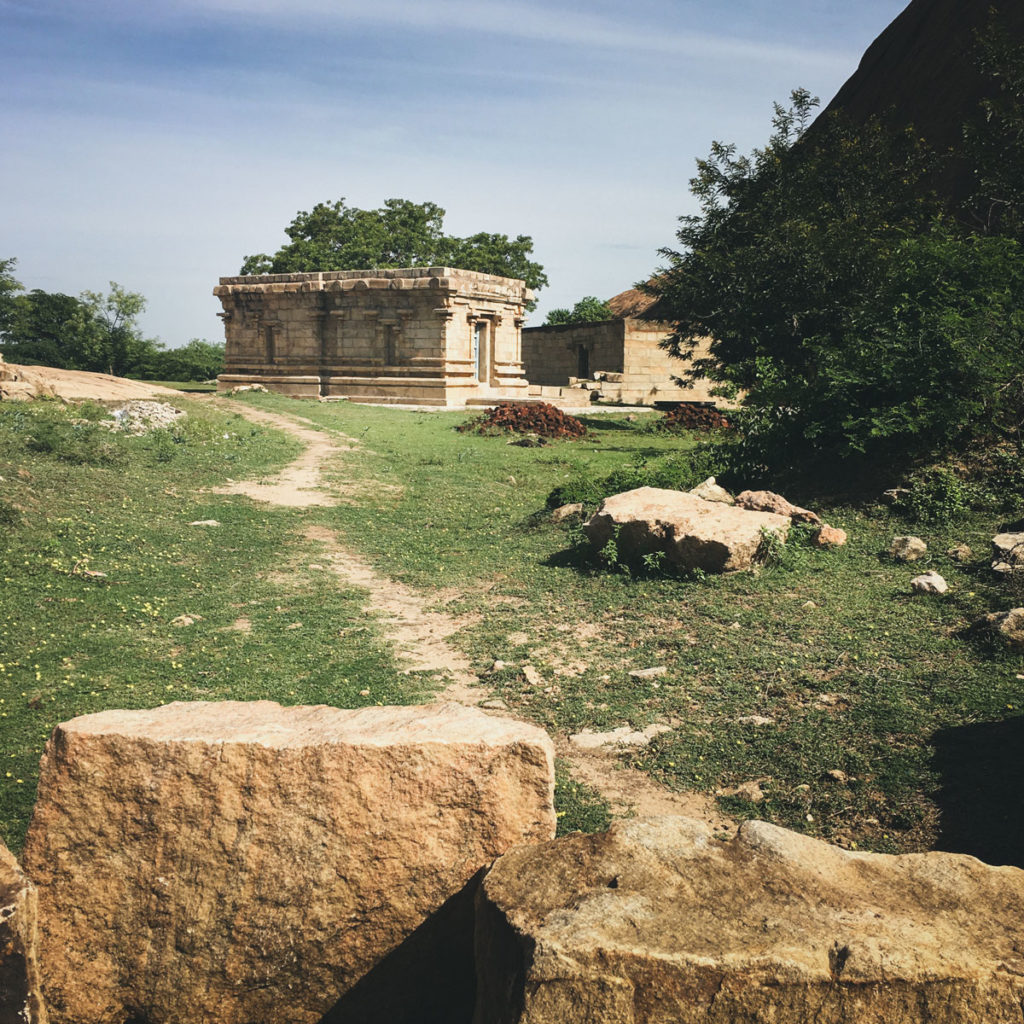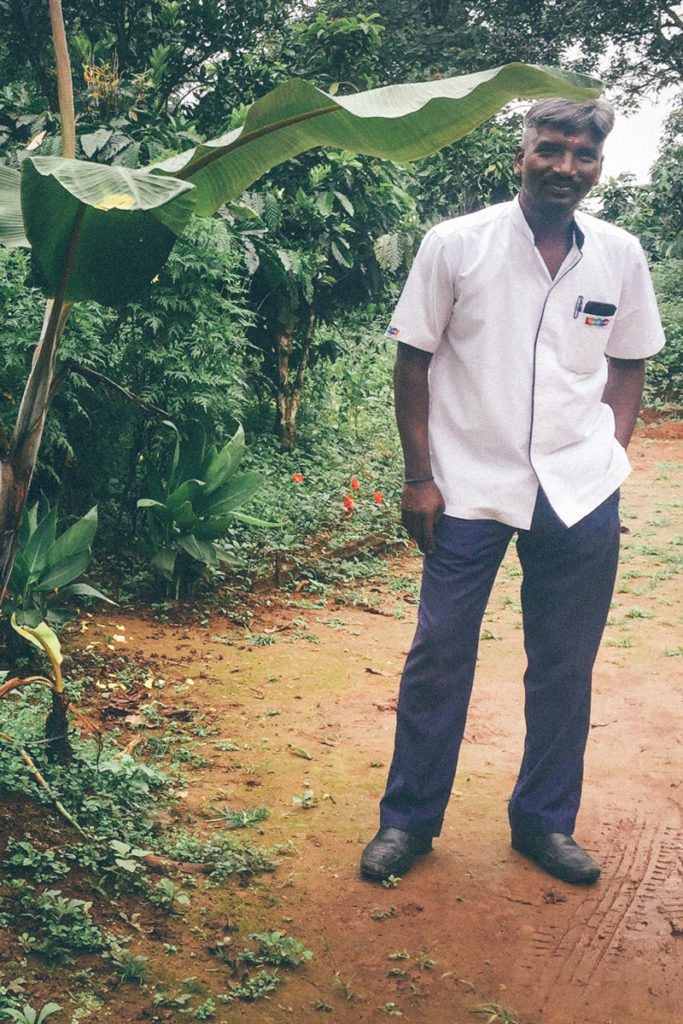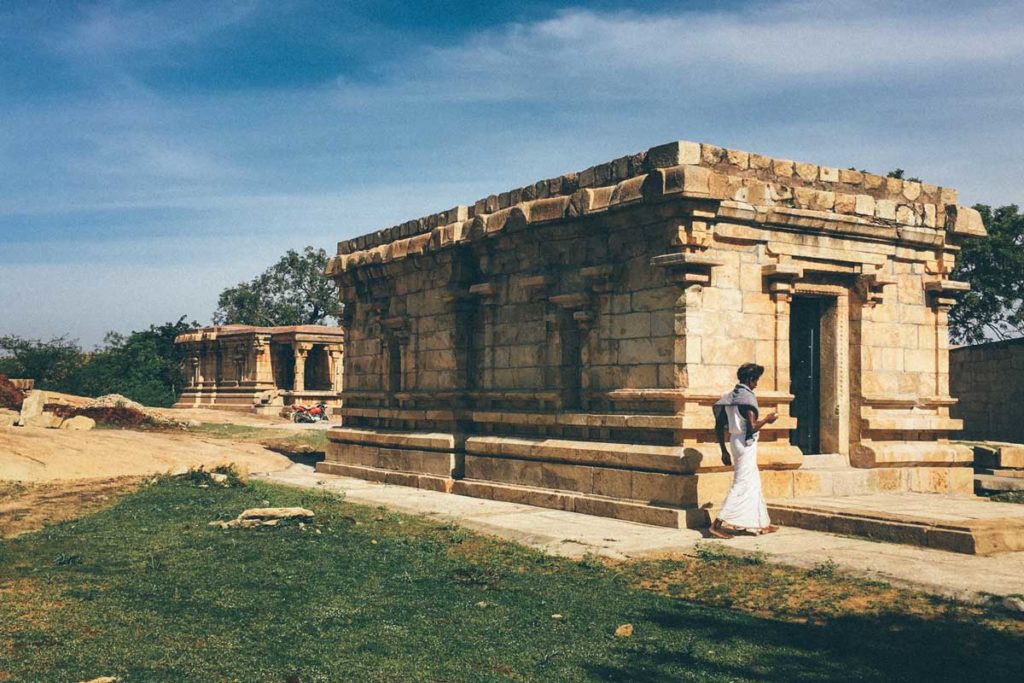After leaving The Bangala, as we whizzed along the Karaikudi to Pudukkottai Highway, near the Thirumayam Fort, our driver Murali asked if we’d like to see a small Shiva Temple that he knew about. We had a long day ahead and had really only just got going but how could we say no? We trusted our driver.
Off the highway he steered. We bounced our way on a dry, dusty, pot-holed goat track (there were actual goats and a goat-herder) before passing a commercial district made of corrugated steel shacks. Once again we veered. This time onto an even smaller lane. When we stopped under the shade of a lone tree we had arrived at a small clear pond and cluster of soft beige stone buildings.
A shining red motorbike leaned on its kickstand near the pond. That will be the priest’s explained Charles, our guide. Murali went to look for the motorcycle riding priest to see if we could enter the collection of small temples. He reappeared with a thin wisp of a man dressed in the bright whites of a Hindu Brahmin caste priest.
An ancient set of heavy looking hollow barrel skeleton keys jangled from a ring clasped in his bony hands. He led us to the first building where a small Nandi (Shiva’s bull consort/transport) faced the faded blue paint of the heavy wooden entrance door. The ornate columns of the interior were unexpected after the simplicity of the exterior. Sunlight fell in a golden hue to shine on carved Sanskrit scriptures and a myriad of pillars. Though the day was hot, the thick walls kept the space cool.
The priest patiently guided us to each building. When we came to the third and last, we sat awhile. I asked Charles to lead us in an invocation.
Invocations are different than prayers.
To pray is to ask for something. To say an invocation is a way to activate the human system before meditating. Isha Foundation explains it well.
“An invocation is a way of bringing out the best in you before you practice yoga. In the yogic culture, invocations are usually in Sanskrit, an ancient language that directly connects sounds with forms. Using sounds to activate the human system is the basis of Nada Yoga, or the yoga of sound. An invocation is a very simple form of Nada Yoga”
Charles chose this invocation.
Asato ma sadgamaya. Tamaso ma jyotirgamaya. Mrityor ma amritangamaya. Aum Shanti Shanti Shantihi
It translates as:
From untruth to truth. From darkness to light. (From ignorance to enlightenment). From Mortality to Immortality. May I be led.
Saying Aum in that space was profound.
In India’s ancient yogic culture, the entire existence is seen as a web of sounds, for which the root sounds are “Aa”, “Oo” and “Mm”, uttered together as “Aum.” Saying A-U-M is believed to activate and energize the various sections of the body, the sound reverberating as it does through the whole system.
Sitting inside that small stone temple, saying Aum and having it reverberate off the walls as well as from our interiors was a chance to experience ourselves as sound, as mere vibration. According to Isha Foundation, Aum “can bring peace and balance to the meditator’s system.”
All thanks to Murali
We have our driver Murali to thank for this experience. When life gets hectic, as it often does, and I want to feel instantly peaceful, all I have to do is think back to this place to feel calm. It was extraordinary to be the only ones there and to be at such an ancient place with a lone caretaker who was so obliging.
This experience has me wondering, just how many temples there actually are in Tamil Nadu? We know about the flashy ones but how many of these quiet ancient places are there?
A temple is not a place to go and pray like churches in religions. Temples in India were built as powerful spaces for people to just sit and recharge their energy. After our experience, it is easy to understand how this revitalization takes place.
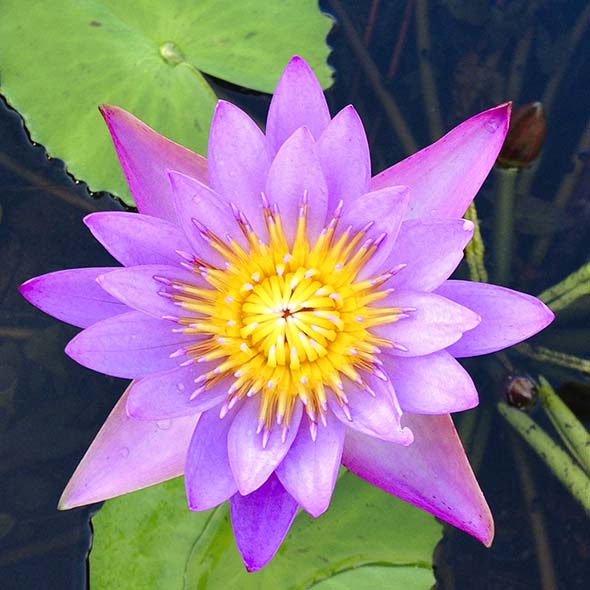
Gratitude
We’d like to thank the KTM Society and Travel XS for sponsoring our travel throughout South India and our driver Murali and guide Charles for sharing their local knowledge of Kerala and Tamil Nadu during our travels in 2016. When it comes to travel, this kind of insider access is what takes tourism from a service to a chance for personal transformation. We are truly grateful to have experienced our guide and driver’s level of commitment, professionalism and passion for this place they call home.
All words and photos are our own and were not shared with the sponsors before publication.

